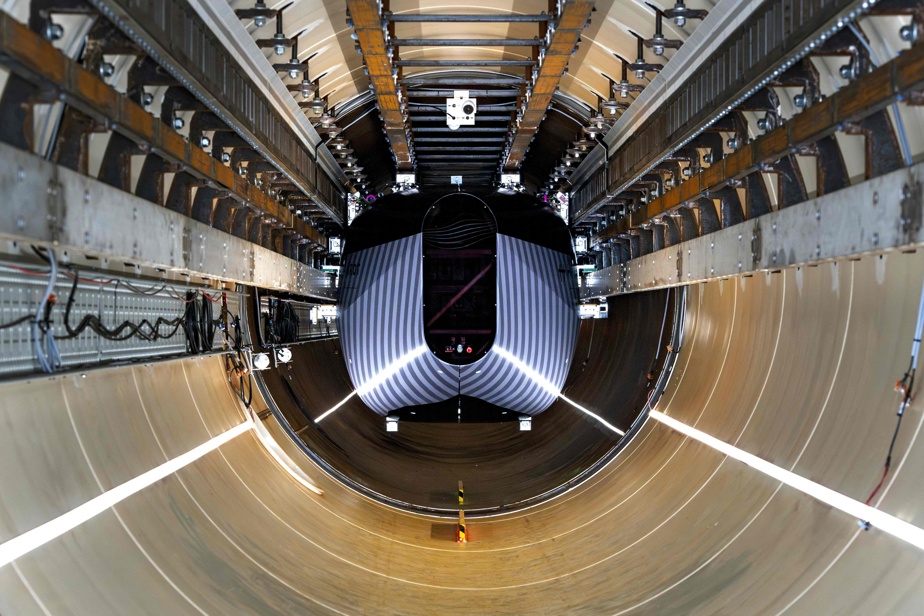(Veendam) Travelling from one European city to another in a capsule propelled at more than 700 km/h is, according to a Dutch company, one step closer to becoming a reality after a first launch deemed promising in the Netherlands.
Inside the 420-metre-long white tunnel of the European Hyperloop Centre, the train covered in light grey and black stripes floated, obeying a control centre, before taking off.
For now, its speed is relatively slow — 30 km/h — but operators hope to have it reach 100 km/h by the end of the year. This first test of the vehicle is promising, according to the Dutch company Hardt Hyperloop.
“We will be ready to transport passengers in a vehicle like this by 2030,” said Roel van de Pas, its commercial director, during a press visit.
This concept of a very fast magnetic levitation train has the potential to revolutionize travel in Europe, connecting Amsterdam to Berlin in 90 minutes, or the Dutch capital to Milan in two hours, he estimated to AFP.
SpaceX and Tesla founder Elon Musk introduced it to popular culture in 2013, in an article proposing a “fifth mode of transportation” to connect San Francisco and Los Angeles.
Several attempts to deploy thehyperloop — launched as an “open source” and collaborative project — notably by the British tycoon Richard Branson, have failed.
Critics decry the “hype” surrounding a technology that has struggled to prove itself, while projects have cost billions of dollars.
Mr Van de Pas, 39, remains certain that it “will really change the relationships we have within Europe. It will really integrate the continent”.
Environment
The next step will be to test the vehicle under complete vacuum conditions – almost all the air must be sucked out of the tunnel to reduce air resistance – and gradually increase the speed.
The Dutch centre is the only one to have a ‘track change’, a tube branching off the main track, to test what happens when a capsule changes trajectory at high speed.
Hardt Hyperloop hopes to soon begin testing this bifurcation necessary for the development of a network.
The ultimate goal is to replace short flights within Europe and long car journeys across the continent, with ticket costs likely comparable to those of a budget airline, Van de Pas says.
Successful network deployment hyperloop Dense transport could have a significant environmental advantage: it uses about a tenth of the energy needed for air travel, and a third of the energy needed for rail travel. Encased in tubes, it would also be completely silent.
The tubes could be placed along existing highways. The European Hyperloop Centre is already testing environmental integration, painting part of the tube to make it look like a forest.
One concern that is often raised is the passenger experience. Transportation blogger Alon Levy described Musk’s initial proposal as a ride that is bound to cause motion sickness.
The vehicles, which are expected to eventually carry around 50 passengers, will have the same type of vibrations and comfort levels as modern trains, says Mr Van de Pas.
Three days after the press visit, a launch took place on Monday in front of 300 guests including Prince Constantijn of the Netherlands.
China already has a test facility capable of speeds of up to 700 km/h.
Far from being discouraged, Mr Van de Pas says he “needs good competitors” with whom he shares “the same mission”.
“We want to make these long-distance journeys zero-emission,” he continues. “We look at what our competitors are doing, and they look at us, and together we build an industry.”
